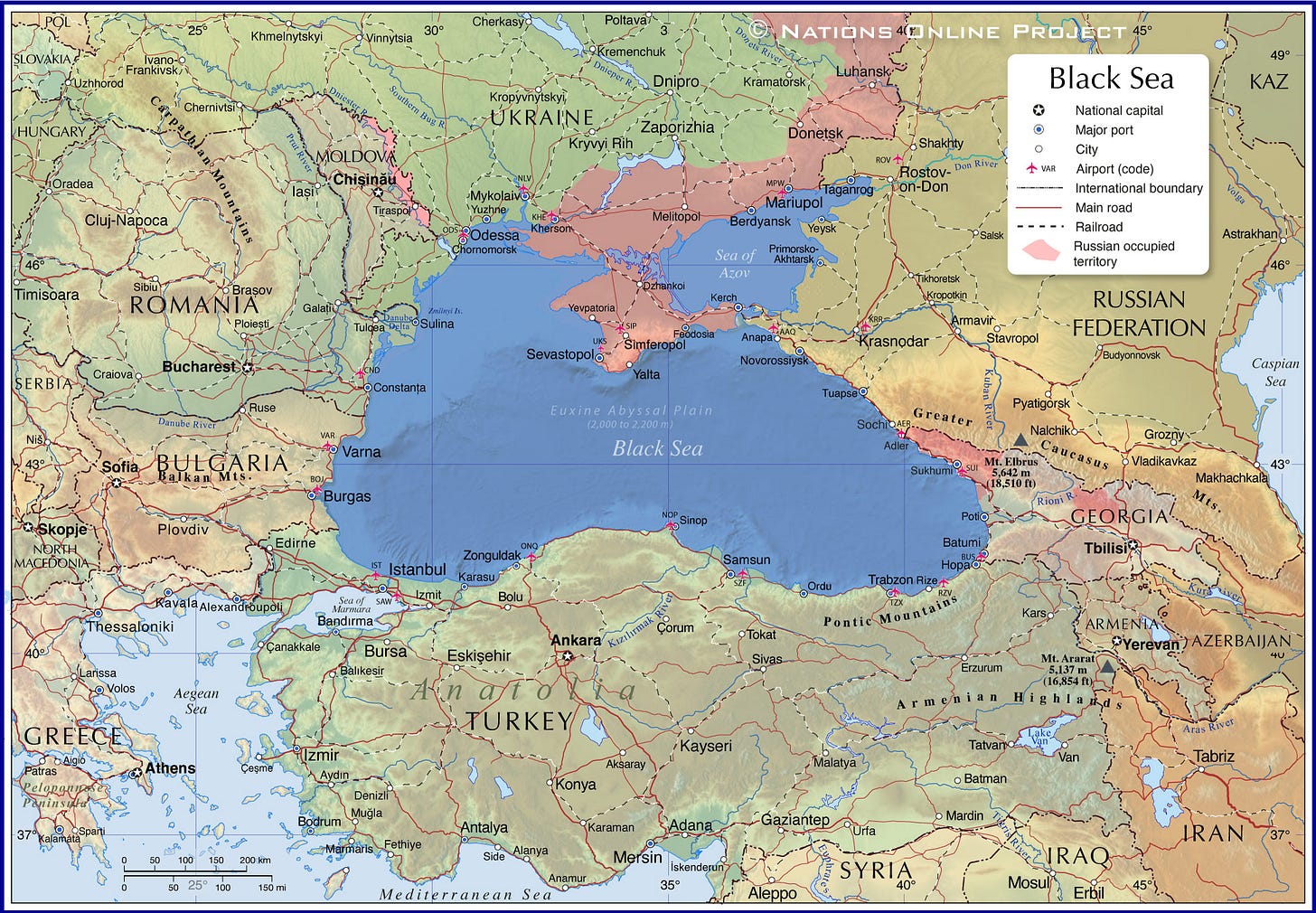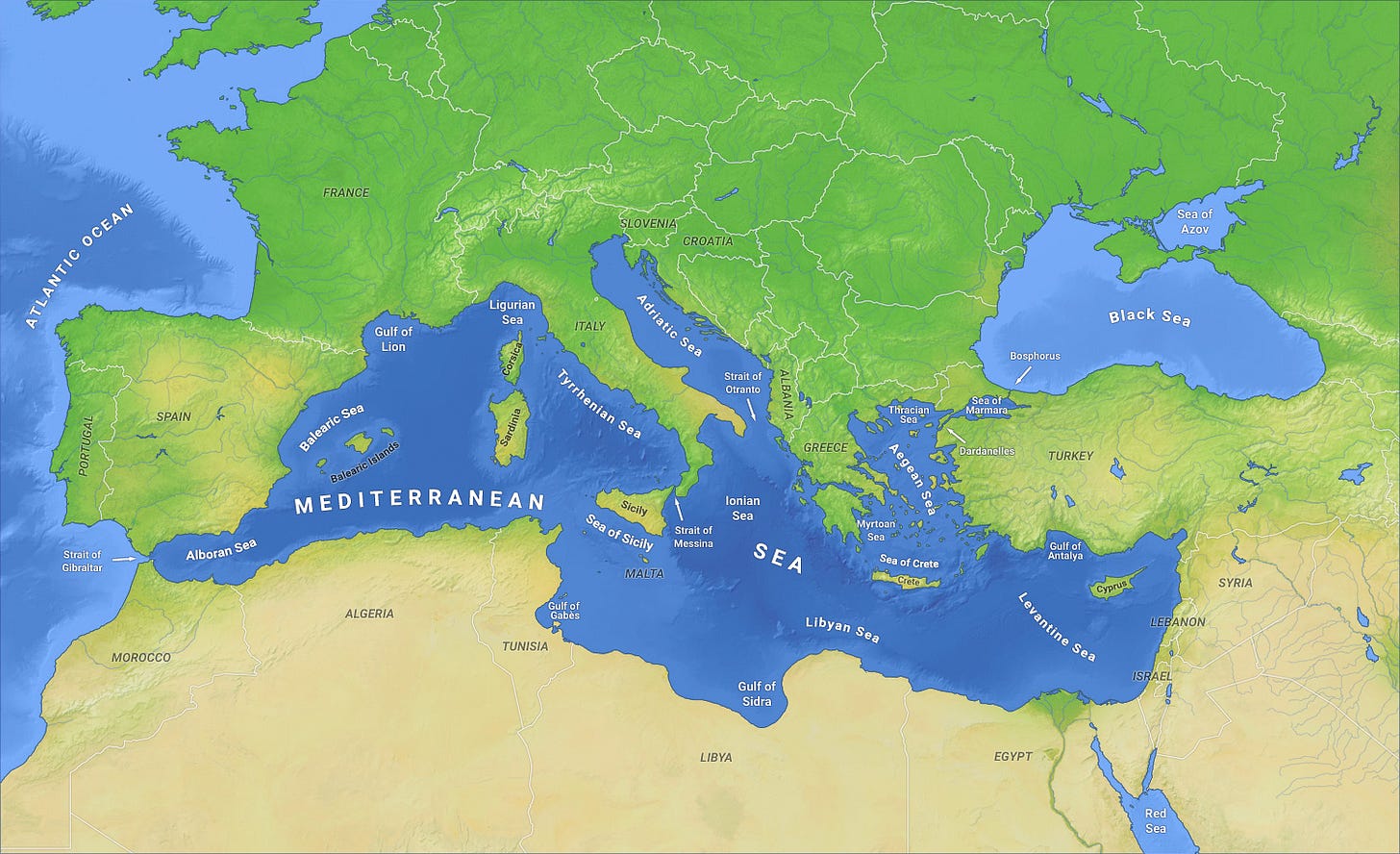Putin Praises Trump's "Sincere Efforts" on Ukraine. Translation: Trump Is Selling Out Ukraine--and Alaska.
And ... Trump hopes this betrayal of Ukraine labelled a "peace deal" will get him a Nobel Peace Prize.

Tomorrow, Donald Trump will meet Vladimir Putin in Alaska because Putin is under indictment by the International Criminal Court on the following charges:
Allegedly responsible for the war crime of unlawful deportation of population (children) and that of unlawful transfer of population (children) from occupied areas of Ukraine to the Russian Federation (under articles 8(2)(a)(vii) and 8(2)(b)(viii) of the Rome Statute). The crimes were allegedly committed in Ukrainian occupied territory at least from 24 February 2022. There are reasonable grounds to believe that Mr Putin bears individual criminal responsibility for the aforementioned crimes, (i) for having committed the acts directly, jointly with others and/or through others (article 25(3)(a) of the Rome Statute), and (ii) for his failure to exercise control properly over civilian and military subordinates who committed the acts, or allowed for their commission, and who were under his effective authority and control, pursuant to superior responsibility (article 28(b) of the Rome Statute).
There is evidence in the last week that Ukrainian children are being sold to Russian families. That makes him guilty also of slavery.
So, Vladimir Vladimirovich Putin can’t set foot in any of the 163 signatories of the ICC, or he faces instantaneous arrest and transport to the Hague, where he would be jailed until until his trial, and then, likely, for the rest of his life.
Now, here’s what Ukraine looked like in 2003, after Vladimir Putin himself signed an agreement about the borders between the two countries.

Notice that Crimea—which was given to Ukraine in 1954 by Nikita Khruschev, who a Ukrainian!—is still part of Ukraine. It was made an autonomous region, but definitely belonged to Ukraine. Notice that the Eastern border of Ukraine with Russia is very close to the Dan River place at which flows into the Sea of Azov after having traveled 990 navigable miles from the lands around Moscow. It’s Europe’s fifth-longest river. The problem for Russia with the Dan being close to any nation’s border it can be interfered with by the nation on the other size. If Ukraine were to join NATO, Russia would be staring down NATO guns on the northwestern shores of the Sea of Asov, and all Russian shipping could be blocked at mouth of the river just east of Mariupol.
And the reason Putin wanted Crimea so badly os the same one: that in the narrow strait between the Sea of Azov and the Black Sea could be completely controlled from Crimea. And, of course, Sevastopol, the diamond of a deep-water port, is on the coast of Crimea. It’s deep enough for Russian naval vessels.
In 2014, when the extremely unpopular pro-Russian president Viktor Yanukovych effectively pulled out of the EU and was promptly treated to two months of rage on the streets of Kyiv, the seemingly endless competition over Crimea came to a head. Yanukovych fled to Russia. Rapidly, the Crimean autonomous region voted to detach from Ukraine and become part of Russia. It was patently illegal under the terms of the 2003 treaty, but no matter that, thought Vladimir Vladimirovich. He simply invaded, annexing Crimea into the Russian Federation.
But Russia still has its perennial problem.
Landlocked Russia’s Lust for the Mediterranean
Russia’s overarching problem—for trade and for world conquest—is the fact that it is landlocked. For much of its history, particularly its modern history, it has been trying to solve this problem. It has ever only had four ways out:
All of the extreme east of Russia lies on the Siberian plateau. The Kamchatka Peninsula and Sakhalin and the Kuril islands are volcanic and prone to major earthquakes (being on the Rim of Fire). It’s winter ports are icebound. To move goods to any place in Eastern Russia involves trains across vast tracts of ice.
The Arctic Sea complexes of Murmansk and Polyarny Inlet, where Russian submarines and heavy sea vessels are positioned. For trade purposes, however, it’s tough for the same reason the Russian Far East is impracticable. The Barents Sea is virtually always ice-free, but the surrounding countryside can see heavy snowfall with significant accumulation from October to June. And Murmansk is 1,200 miles from Moscow. Given the impossibility of working out of the Russian Far East and the expanse of ice on the ground between Moscow and Murmansk in winter, the Arctic Sea is a difficult choice, though Climate Change warming is clear in the harbors and fjords in the Arctic.
The Sea Access Russia Lost:
Of course, Russia once had frontage on the Baltic Sea because it annexed Latvia, Lithuania, and Estonia and used their ports. But ice clogs the Baltic annually for seven months, from November to June. In normal winters, the Gulf of Bothnia, the Gulf of Finland, and the Gulf of Riga are iced over, and much of the area’s shipping grinds to a halt. This left Russia only the major ports in Lithuania, chief among them Vilnius, through which to trade and operate naval vessels. But when Latvia, Lithuania and Estonia left the USSR in the 1990s after the breakup of the old Soviet Union, they leaned heavily into Europe immediately: all three became members of NATO, the European Union, the Eurozone, and the OECD. Russia lost all its Baltic ports.
Fighting for the Black Sea and Access to the Mediterranean:
This leaves just the War with Ukraine to solve Russia’s problem—and leave it free of specific threats posed by NATO, too. Look up at the pink areas of the map above. Russia has already taken all those areas: it wants to keep them and have Donald Trump tell them they can have them. Well, it’s not Donald Trump’s land to give. But the Yalta Conference gave Stalin the Baltic territories to begin with, and Putin and Trump have no trouble believing they can carve up Ukraine any way they like and tell Ukraine to live with it. If Putin can get the pink area of the map without another shot fired—and he will pay Trump to get it and Trump will pay him in rare earth minerals from Alaska to get it, making a fool of Murkowski yet again—that’s fine. If it comes down this way, Putin will control Black Sea access from Odessa to the northeast water border of Turkey. And it will not be long before he takes the Black Sea Coasts of Romania, Moldova and Bulgaria.
This is Putin’s real target:
Once Putin’s vessels are out into the Mediterranean, he has a trade route as no Russian ruler has ever had. He tried this with Syria, but it didn’t work. Getting into Syria from the north involved the same problems with impassible mountains that are involved with getting Russian goods out of the coastlines Russia already controls south of the Dan River.
But Putin’s greed to the Black Sea means more than that.
Once Putin negotiates with a very Russian-friendly Recip Tayyip Erdogan, tyrant of Turkey, for rights through the Bosporus, the Marmara Sea and the Dardanelles, he is loose in the Med. And it’s just a quick, but arguably tougher, trip through the Straits of Gibraltar out in the Atlantic. And, if he wants, he can bring the navy down the coast of Europe to Gibraltar from Murmansk.
And this is what people have always feared: Putin wants Europe. Control of the Black Sea and the Turkish possessions that block their way into the Mediterranean will give him the chance.
And he wants Ukraine — all of it. Ukraine will resist. It still has the long-denied, deadly Holodomor very present in its cultural memory. And it is the source of great enmity between Ukraine and Russia, and it’s not going to go away. From Britannica:
Holodomor, a man-made famine that convulsed the Soviet republic of Ukraine from 1932 to 1933, peaking in the late spring of 1933. It was part of a broader Soviet famine (1931–34) that also caused mass starvation in the grain-growing regions of Soviet Russia and Kazakhstan. The Ukrainian famine, however, was made deadlier by a series of political decrees and decisions that were aimed mostly or only at Ukraine. In acknowledgement of its scale, the famine of 1932–33 is often called the Holodomor, a term derived from the Ukrainian words for hunger (holod) and extermination (mor).
If Ukraine falls, this time it will be as bad or worse.
Trump’s Quest for the Nobel Peace Prize
Well, this started long ago. Barack Obama has a Nobel Peace Prize, and Trump is FURIOUS he doesn’t have one, too. But Trump has solved not one of the world’s problems.
But, reality be damned!
So, he got another ICC-indicted head of state — Benjamin Netanyahu — to nominate him for the Nobel Peace Prize. My guess is that if he comes up with a Ukraine “peace deal”—meaning, he GIVES Ukraine or a large part of it to Putin — he’ll have a claim (he thinks) to demand that the Nobel Prize Committee give it to him.
So, the Nobel Prize Committee has a target painted on it the size of Kansas.
Meanwhile, we also know that Putin has promised Trump money. And we also know. Trump has promised Putin rare earth elements not just from Alaska but also from India—which has just been told it faces higher tariffs if it doesn’t play ball.
Well, we’ll see.
But there are two things at stake here that are very, very dangerous:
Complete loss of freedom for Ukraine and the execution of Zelenskyy
Putin loose in the Mediterranean
Putin will never stop trying to conquer more territory. He won’t. And any policy short of saying “absolutely not on any level” is not a tactic worth trying.



Bring two hog ties to Alaska boys..tomorrow
Being nominated for the Nobel Peace Prize by a war criminal accused of genecid doesn't seem to me a very productive way of receiving one. Especially when the would be recipient is actively trying to give away an independent country to a fellow dictator. When he tries to give away Alaska I'm sure he'll have the support of it's snotty nosed Representative (after all, it may seem like a bad idea, but what can she do?) It would be wonderful if some universal, independent law enforcement could show up in time to arrest Putin for his war crimes. And take the Donald with you, also.